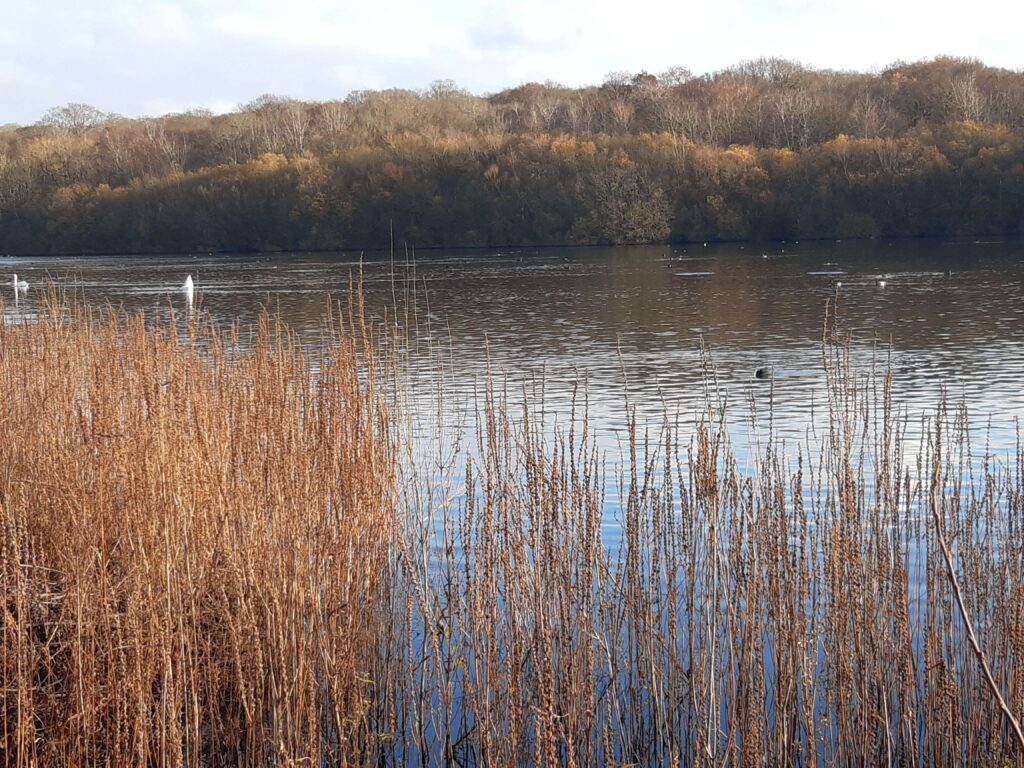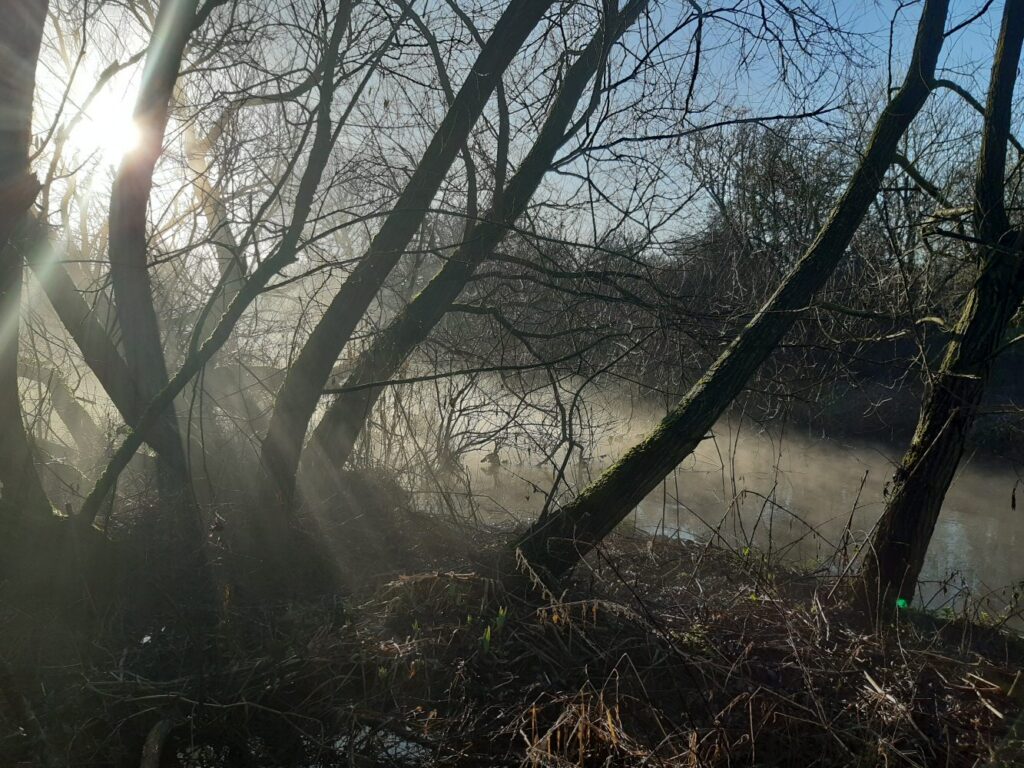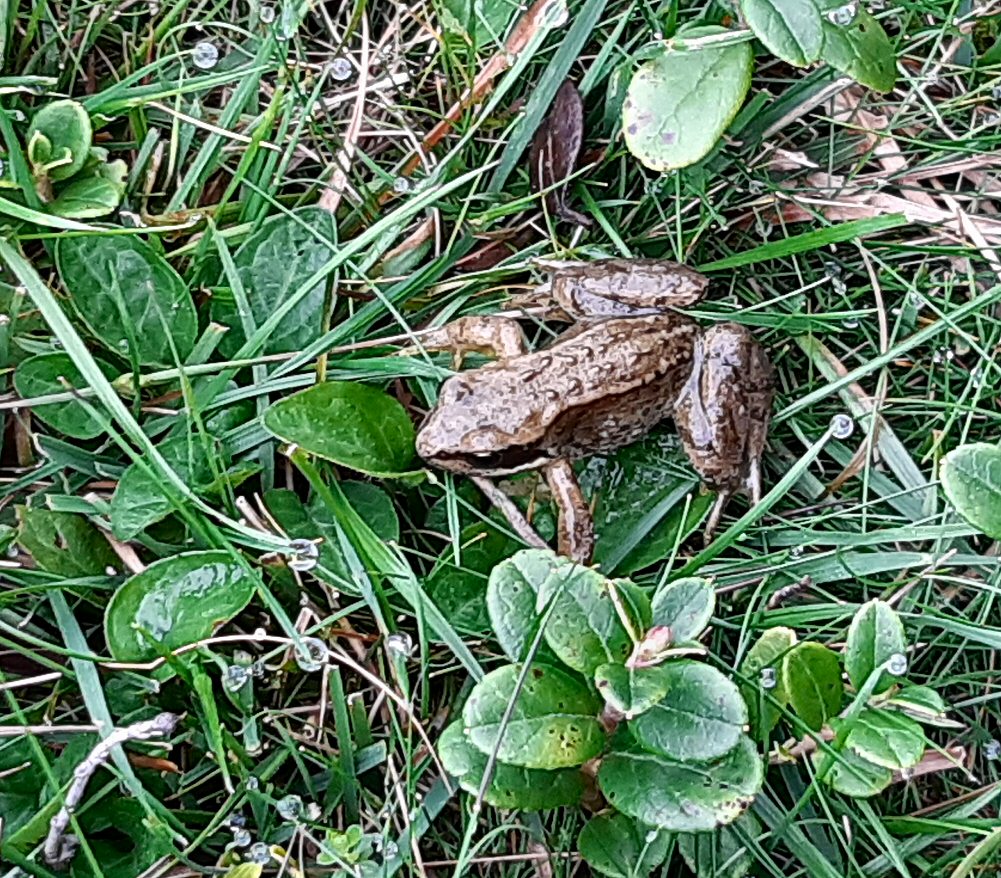























Among the wonderful moments on this walk: a heron gave its cronking call and flapped slow over the water; a plane passed behind three cormorants drying their wings, perched on the branches of a dead tree; a group of goldeneyes panicked and pattered across the lake, gaining speed for takeoff, giving their high-pitched call, the waves sparkling in the slanting sunshine; a song thrush tentatively singing its repeated music; a solitary fieldfare.


Barden Moor is an extensive water catchment area, on acidic rock (Millstone Grit), providing soft drinking water to the city of Bradford. The area is part of the ancient Bolton Abbey estate, and is now also in the Yorkshire Dales National Park. It’s covered in heather and moorgrass with areas of meadow and bog pools. It’s a fine place for an open airy walk away from the sometimes busy mountaintops, and a wonderful spot for nature.















The Ingleton Waterfalls Trail is on private land, with a fee that includes car parking (it was £7 per person when we did it). The trail has been made one-way for the Covid crisis to enable social distancing, so the only current route is from the car park at Ingleton, up the valley and gorge of the little River Twiss, across the windy moor at the top, and down the gorge of the River Doe back to Ingleton. It’s about 8 kilometres, 5 miles, and takes most people about three hours, as there’s quite a bit of uphill walking and a lot to look at, listen to, and photograph, sketch, or paint according to your taste.
Where much of the Yorkshire Dales scenery is (white) limestone, the rocks here also include reddish sandstone and striped bluish or greenish shale and slate. The sandstone is a hard, massive, blocky rock that causes the rivers to run in narrow gorges. The slate, like the slates on many local rooftops quarried from the area, is a hard, waterproof, compressed (metamorphosed) rock that splits into flat sheets at an angle to the layers of mud from which it was originally formed; it forces the rivers into waterfalls. The rocks are up to about 500 million years old.
The walk begins up through the pretty wooded Carboniferous limestone “glen”, with a canopy of Ash trees and undershrubs especially of Hazel. The forest floor is carpeted with Bluebells in wet places, Dog’s Mercury where it’s drier, and plenty of handsome mosses and ferns.

The valley narrows into a gorge, with the river swirling with natural foam in interesting vortex streets against the dark brown peaty water. The foam is created by the action of the waterfalls on soapy chemicals from moorland plants; there is no pollution here.
The five Pecca Falls are already spectacular to eye and ear; I had fun making a video of the rushing water from two converging falls.
Up at the top is Thornton Force — the Norse word for waterfall is “Fors”, so this is another instance of Viking influence, along with familiar local placename elements like Dale from Norse “Dal”, valley and all the towns and villages whose names end in -by, from “By”, village. It is an attractive place for a picnic, sheltered from the wind, with the beautiful fall and nice flat rocks to sit on.
The path climbs out of the now very small Twiss valley, and crosses the open moor eastwards to the valley of the River Doe.

The path winds down quite steeply, while the river is sometimes so deep in its narrow gorge that you can’t actually see down to the water! There are more attractive waterfalls, and several slate quarries: you can see exactly where the quarrymen split off flat slabs of rock.

The path drops into Ingleton with its cosy shops, cafes and restaurants, not to mention its impressive but disused railway viaduct high above. Just keep going downhill to cross the river at a low stone bridge, and the car park is right around the next corner.

This walk is a loop and could be started from the top, at the car park near Malham Tarn, or the bottom, at Malham or Gordale.
From the Malham Tarn car park, walk a little way westwards along the road across the small stream, and turn left to go southwards on the Pennine Way across the nearly-flat Ewe Moor; the track is well signed all the way. Part of the way you walk gently down a dry valley; there are some short stony sections but with good boots and perhaps a walking pole it’s a delight. After a mile or so, the path takes a bold zig-zag to descent to the top of Malham Cove and its magnificent Limestone Pavement: tiny crustose lichens grow on the hard surface of the clints, and ferns and flowers such as cranesbills flourish in the deep grykes, definitely not places to drop your camera or telephone.
Without taking risks leaning over the vertical cliff, you’ll see the extraordinary sight of the dry waterfall of Malham Cove: during the Ice Age, it was a huge Niagara-sized fall. Actually a small stream emerges at the bottom, but it doesn’t come from straight above but from a different stream that vanishes into the limestone a distance away. In 2015 Storm Desmond briefly resurrected the waterfall, and some lucky people saw the water plunge the whole drop from the smooth overhang.
A gentle grassy path leads eastwards from the limestone pavement (top left of the photo), well back from the cliff edge, and descends gradually to cross the narrow road that winds up the hill (and back to Malham Tarn). The path goes on descending eastwards to Gordale, where it joins the next road just where a convenient ice-cream and refreshments van likes to park. A little way up the road on the left is the well-marked track to Gordale Scar. Its fast-flowing stream is on your left as you walk northwards; gradually you approach the enormous cliffs, until you suddenly round the corner to your right, and you are greeted by the splendid sight of the waterfall in a V-shaped gorge, pouring over a large rock.
If you are adventurous and up for a (simple and short) scramble, you scale the middle of the rock, which has quite big handholds. Once up, you have a delightful walk up the valley and across the moor back to Malham Tarn.
If that is too alarming, you walk back towards Malham Cove, and when you come to the winding road, you follow it for half a mile or so up the hill until you reach the Public Footpath sign on the left; it crosses the moor rather directly to the car park, though in the middle of the moor you have to take the left-hand fork for the shortest way back to your transport.